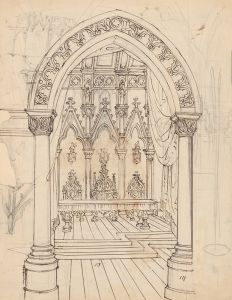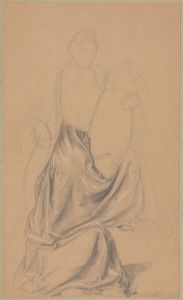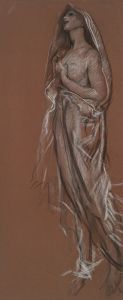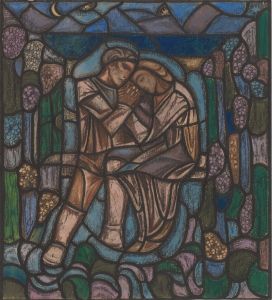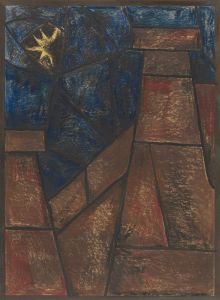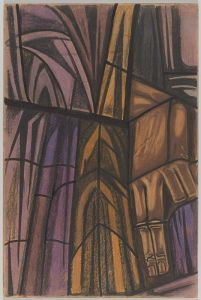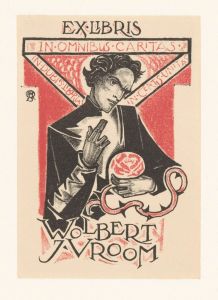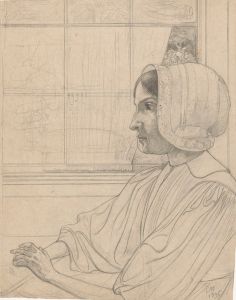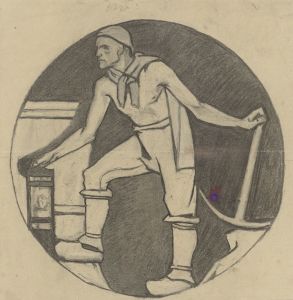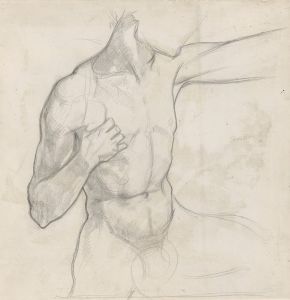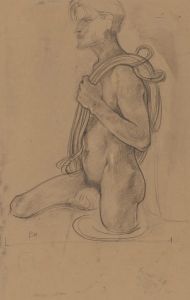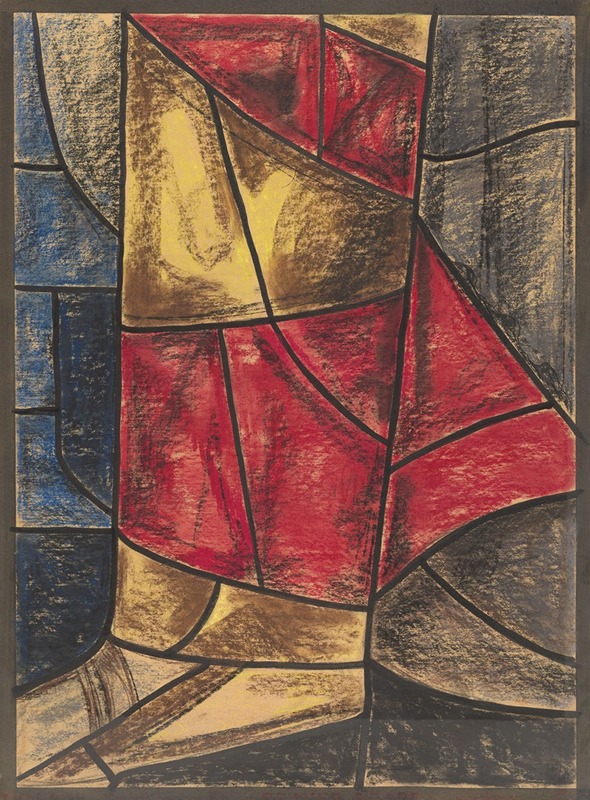
Ontwerp voor raam in het Noordertransept in de Dom te Utrecht 2
A hand-painted replica of Richard Nicolaüs Roland Holst’s masterpiece Ontwerp voor raam in het Noordertransept in de Dom te Utrecht 2, meticulously crafted by professional artists to capture the true essence of the original. Each piece is created with museum-quality canvas and rare mineral pigments, carefully painted by experienced artists with delicate brushstrokes and rich, layered colors to perfectly recreate the texture of the original artwork. Unlike machine-printed reproductions, this hand-painted version brings the painting to life, infused with the artist’s emotions and skill in every stroke. Whether for personal collection or home decoration, it instantly elevates the artistic atmosphere of any space.
Richard Nicolaüs Roland Holst (1868–1938) was a prominent Dutch artist associated with the Arts and Crafts movement. He was known for his work in various mediums, including painting, graphic design, and stained glass. One of his notable contributions to Dutch art and architecture is his design for stained glass windows, including the piece titled Ontwerp voor raam in het Noordertransept in de Dom te Utrecht 2 (Design for a Window in the North Transept of the Dom Church in Utrecht 2).
This artwork is a preparatory design for a stained glass window intended for the Dom Church (Domkerk) in Utrecht, one of the most significant Gothic churches in the Netherlands. The Dom Church, originally built as a Roman Catholic cathedral, became a Protestant church following the Reformation in the 16th century. Over the centuries, the church has undergone various restorations and renovations, during which stained glass windows were often replaced or newly commissioned.
Roland Holst's design reflects his characteristic style, which combines traditional craftsmanship with modern artistic sensibilities. His work often featured religious and allegorical themes, rendered in a highly decorative and symbolic manner. The design for the window in the north transept likely adhered to these principles, incorporating intricate patterns, vibrant colors, and figures that conveyed spiritual or moral narratives. However, the exact details of the imagery in this specific design are not widely documented.
The Dom Church has long been a site of artistic and architectural significance, and the inclusion of stained glass windows designed by artists like Roland Holst underscores its role as a repository of Dutch cultural heritage. Stained glass windows in churches often served both aesthetic and didactic purposes, illustrating biblical stories or saints' lives to educate and inspire the congregation. Roland Holst's contribution to this tradition reflects his deep engagement with both the spiritual and artistic dimensions of his craft.
While the design itself is a testament to Roland Holst's skill and vision, it is unclear whether this specific design was ever realized as a completed window in the Dom Church. Many of his stained glass designs were created as part of larger commissions, but not all were executed. The surviving designs, however, remain valuable as standalone works of art and provide insight into his creative process.
Richard Roland Holst's legacy as an artist is closely tied to his ability to bridge traditional techniques with modern aesthetics, and his stained glass designs continue to be appreciated for their beauty and craftsmanship. The Ontwerp voor raam in het Noordertransept in de Dom te Utrecht 2 is a fine example of his contribution to Dutch art and the enduring tradition of stained glass in ecclesiastical settings.





